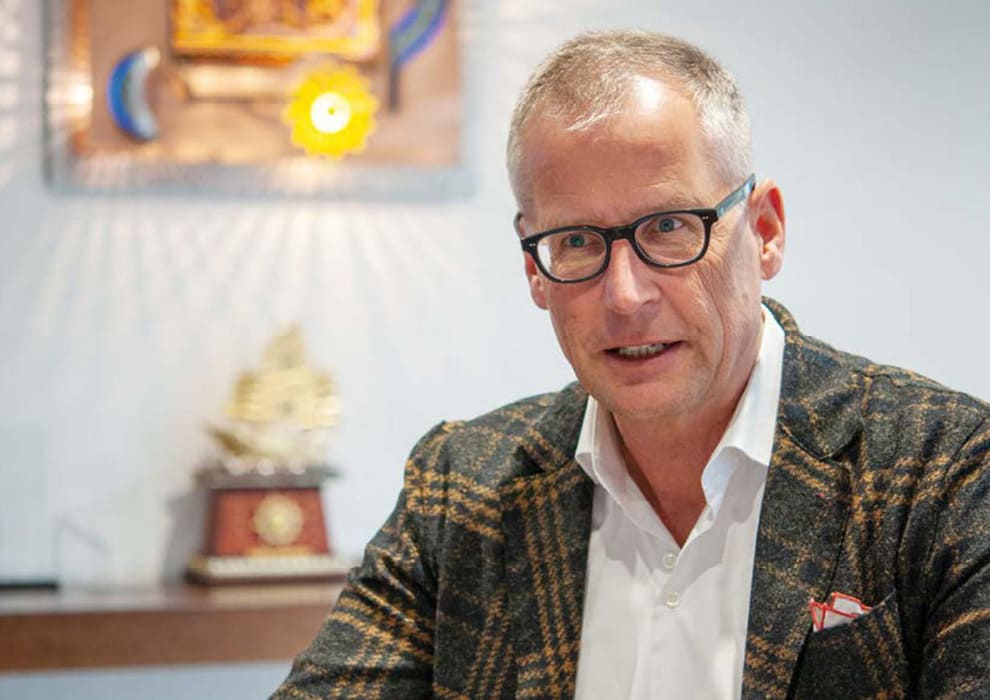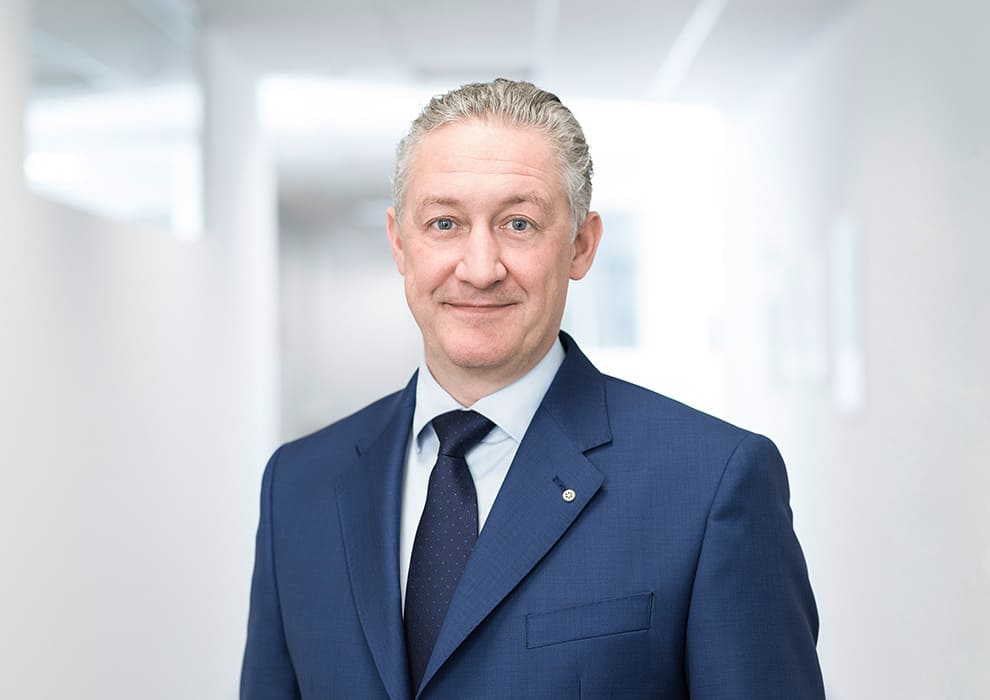Download the original article as a PDF
This article appeared in K-PROFI, issue 5/2022 and was written by:
Dipl.-Ing. Markus Lüling, Chefredakteur K-PROFI
How Wirthwein tries to determine and optimise the CO2 footprint of plastic parts
Determining the CO2 footprint of a plastic product is not easy, especially since the biggest uncertainty factor comes from outside the processing plant. The Wirthwein Group provides insight into its approach to bringing transparency to the footprint and discloses results and considerations.
As a family-owned company with 22 production sites in six countries, 3,500 employees, 400 million EUR turnover and several hundred injection moulding machines, the Wirthwein Group, headquartered in Creglingen, Germany, supplies customers in the automotive, railway, electrical industry, household appliances, medical technology, and interior design sectors. “Materials account for the largest share of costs in our production – 60 per cent on average,” reports board spokesman Marcus Wirthwein, “the second most important factor, after personnel costs, is electricity consumption, followed by all other factors.”
It's a similar story with the CO2 footprint. “The plastic we process accounts for about 80 per cent of the emissions,” analyses Holm Riepenhausen, Chief Technology Officer, “around 10 per cent is accounted for by narrower plastics processing, operating technology such as compressed air, recooling and lighting, and 10 per cent by other tasks such as logistics, IT and administration.” At Wirthwein, too, the usual performance indicators of emission reduction/sales (CARR ranking) and energy consumption/quantity of material processed (M-SEC, P-SEC, S-SEC) describe the efforts to achieve the most energy-efficient and low-CO2 production possible, but they are subject to many external factors that call the validity of the values into question.
CO2 footprint missing for 90 per cent of materials
“Given that materials account for 80 per cent of the CO2 footprint, the real lever for reducing the CO2 footprint lies in the decision on materials and processes. In a Tier 2 or Tier 3 position, I as a processor have only limited influence on the product design. And on whether I use a foaming process and thus reduce my material input, whether I can use sandwich technology to put recycled material into the core, or whether I use material with a better CO2 footprint. I can advise, but I cannot determine the component concept,” Holm Riepenhausen regrets, “the key to good efficiency or CO2 balance lies elsewhere – in a product and material design that is essentially determined by our customers.” Particularly obstructive to this is the still low transparency on the materials side. “For more than 90 per cent of the Name Grades used, we currently don't get any CO2 values from the plastics producers,” complains the technical director, “so the most important component brings with it the greatest uncertainty.”
Are alternatives to stock materials an option? Holm Riepenhausen: “As far as CO2 values of Name Grades are known, alternatives can be identified. In the broad classification of polycarbonate (PC), polyamide (PA), polypropylene (PP), one can try to work with the material whose energy requirement in production is the lowest – in more technical applications that would be PP. We are also interested in the topic of biopolymers because that would also bring significant advantages.”
Biggest savings expected in the highest specific energy consumptions
Wirthwein looked all the more closely at the two 10-% blocks of their CO2 footprint. From an emissions point of view, the many production sites close to the customers prove to be a competitive advantage. An energy management system that has been in use for many years has already created transparency in detail. “All consumers are tackled decisively,” says Holm Riepenhausen.
In the 10 % block, which concerns pure plastics processing, the focus is on the machines and systems that use the most energy – measured in kWh/kg. Holm Riepenhausen: “We have a stringent plan in place, staggered according to the savings effect. They work best for those materials that physically cause the highest specific energy consumption. We attach great importance to energy-efficient technologies. We evaluate each investment according to efficiency using a TCO approach. We aim for an annual progress of minus three percent in specific energy consumption. We have established that as a realistic target, and we see this as being possible in our machine fleet for the next five to ten years.”
Every operational measure has a CO2 effect
The underweighted control variables within the 10-% block – consisting of operating technology, in-plant logistics, IT and administration – are also in view. “I don't want to highlight any one factor, but for all factors of energy management there is an action plan on how we make progress. Compared to the 80 per cent block, these are drops in the ocean, but you still have to take care of your own sphere of influence. Because every measure ultimately has not only an emissions effect but also a cost effect,” Holm Riepenhausen emphasises.
“At the moment, no comprehensive, serious CO2 balancing can be done because the main influencing variable is not consistently available. Nevertheless, we have to give our customers a decision-making tool. Therefore, we first work with standard values and, if necessary, make the advantages or disadvantages of individual materials transparent in a difference analysis.” Holm Riepenhausen wants to take care of this non-transparent 80-% block of the CO2 footprint in a concerted effort – with product design, process and material selection and an evaluation tool that allows a comparative balance and helps to make the right decisions: “We are not waiting for an SAP tool that may one day be considered the industry standard. We know where we have to go – via ABC analyses, in self-supply, in optimising emissions and saving costs. Energy-efficient production is also cost-effective, and the ecologically right decision is also the economically right one,” he is convinced. “ In addition to cost calculation, CO2 calculationwill also be needed in the future.”
Tools for determining the CO2 footprint are useful
“Therefore, along the value chain, every material, every machine and every process need a CO2 footprint.” Sooner or later, all suppliers will be obliged to provide footprint data, the two board members predict. Until then, however, tools will be needed to help make decisions.“ We can't wait until all material data is available and until the system competition among the tool providers has been decided,” Holm Riepenhausen concludes: “There are already tools on the market, some of which, like the Reach system, are very elaborately designed. Nevertheless, they do not solve the problem of not knowing the material footprint.”
Even though those responsible at Wirthwein expect further developments on the supplier market in the near future, they have decided to set up a tool for CO2 balancing themselves. “We use it to advise our customers on the selection of materials, processes and logistics concepts. Because regardless of the unavailability of material values, I can suggest a product layout that leads to a CO2-optimised product. What works well is to compare individual Name Grades or manufacturing at individual sites. In the comparison I get a real delta value that is also tenable in itself,” Holm Riepenhausen has analysed, which is why Wirthwein wants to actively offer his customers the assessment via the tool this year: “It won't be certified, but it will be an effective decision-making aid.”
Identical and transfer parts can improve the balance sheet
Looking beyond just the moulded part can also help decisions. “We should also put a CO2 sticker on every mould,” suggests Marcus Wirthwein, “that would also favour takeover parts from previous models.” Many parts in successor models of the automotive industry would look slightly different with unchanged requirements and would not have a positive effect on the CO2 balance, but lead to emissions in the development and production of the new tools: “With new model series, common part strategies are always set up, but why do I have to redesign proven parts every time? If I use parts from the same mould for one model longer, what is the footprint? Maybe we need to attach a CO2 value not only to the components, but also to the tools.”
Despite the extensive discussion about the use of recycled material in many non-critical applications, it is still difficult to implement. Holm Riepenhausen: “We have offered our customers large-scale trials in which we increase the recyclate use quota for some products gradually, batch by batch and clearly shown slowly to see whether the quality is maintained with the use quota. No customer accepted the offer.” And he points out a contradiction: “Even the use of production recyclate or circulating material from our own production is prohibited by some customers, although they demand elsewhere that more recyclate should be used. There are still a lot of reservations to be still have to be cleared up.”
The use of recycled materials still fails due to reservations and concerns
Confidently, Marcus Wirthwein goes one step further: “We would even be prepared to take back all the parts we produce – vehicle components, lye containers, track fastenings, fan wheels – if these cycles could be organised and worked. We know exactly which material we used to make which parts, even a long time ago, and where the recyclate from these could be well reused.” Marcus Wirthwein: “The cycle has to fit. And it just doesn't fit. Not yet.”
He adds another thought: “Perhaps we need to focus more on CO2. OEM customers in particular must be prepared to support the change process in favour of the CO2 balance and perhaps use a different material.” If all testing and application requirements remain as high as they are, nothing will change, he notes, offering an example from automotive supply: “Our window frame trim was mostly PA-GF15. Now we make them in PP. With the 1:1 change to PP, they don't pass the old climate change tests, but with a few design tweaks to the part and some sensible adjustments to the test parameters, they pass the test in PP today.”
Part of the solution is more in-house energy generation
In addition to reducing energy use, Wirthwein wants to generate more green energy itself. Holm Riepenhausen: “The key figure to improve ourselves is own generation in proportion to our own energy consumption. This is how we can measure our progress, in terms of both generation and savings. We set ourselves clear targets here – but not for CO2 emissions per euro of turnover, because we don't consider that to be reputable. The share of self-generated green energy – photovoltaics, wind and combined heat and power plants are already operated by Wirthwein – in consumption is to grow from 20 to at least 30 per cent by 2035,” he announces.
“If we really want to become completely independent and completely green, this is only possible with appropriate energy storage systems, of which we must create even more capacities.” The company has also become active in this area, as Marcus Wirthwein explains: “Many years ago, we participated in the startup JenaBatteries, which develops metal-free redox flow batteries as stationary large-scale power storage systems. We manufacture the distribution plates for these storage systems as well as bipolar plates for fuel cells. At windand solar farms or at energy hubs, electricity can be stored close to the generator and fed into the grid at different times. The production of green hydrogen could also be supported in this way.” Holm Riepenhausen: “We increase the share of self-generated energy, save in production, and as an enabler we manufacture products for storage and actively do something to make the energy transition possible. That's quite a neat approach for a company of our size.” Offsetting any activities through third-party CO2 projects is something Marcus Wirthwein rejects: “Buying CO2 certificates means greenwashing to me.”
Price still beats ecology
Despite all considerations, Marcus Wirthwein still sees a large discrepancy in the value chain: “The customer says: If the price is right, you are welcome to produce our component in Germany with a better CO2 balance, but if the price is not right, please deliver from abroad. At some point in the price negotiation, production location and CO2 suddenly no longer play a role: price beats ecology.” This leads to the fact that even customers geographically close to a Wirthwein location are not necessarily served from there. Marcus Wirthwein: “If we still have to supply customers in Germany from many hundreds of kilometres away instead of over the fence for cost reasons, that is also greenwashing to me. Some products are driven all over the country and then it is claimed that they are CO2-neutral. We're not saving the environment with that, definitely not.”
Another challenge is the global competition that has emerged due to different certificates and different criteria in the individual countries. Marcus Wirthwein: “One customer wants this certification, another wants that standard. There needs to be real comparability with uniform criteria and uniform measurement procedures!”
Affordable expansion of renewable energy and clear prices for pollution called for
What framework conditions and initiatives are needed to improve the situation? Politics and associations would have to pull together, and institutions – SKZ, KUZ, Fraunhofer Institutes – would also have to cooperate, says Marcus Wirthwein: “My appeal to the federal government: If we are guided by the CO2 footprint, we must also recognise this intention somewhere. On the one hand we want CO2 certificates and recyclate use, on the other hand it should not cost anything.”
Holm Riepenhausen supports the point of view: “We need good legislation – cross-sectoral, cross-regional or even global – with clear pricing for pollution. There must be no loopholes in the implementation of the Carbon Leakage Regulation (BECV) that puts German industry at a disadvantage.” With a view to renewable energies, he demands: “If individual pioneers get too far ahead of the overall target, this leads to the unhealthy shifts. It doesn't help if I want to present myself as particularly green and want to use exclusively green energy years earlier than others. Because it is not sufficiently available. The redistribution of a good that is not sufficiently available leads to skyrocketing prices without the corresponding CO2 effect. Therefore, politics must shape the framework conditions in such a way that the real expansion of renewable energies roughly corresponds to the political goals in terms of time and capacity. The expansion must follow the targets, keep pace and be affordable in time.”
Sustainability at Wirthwein Medical


